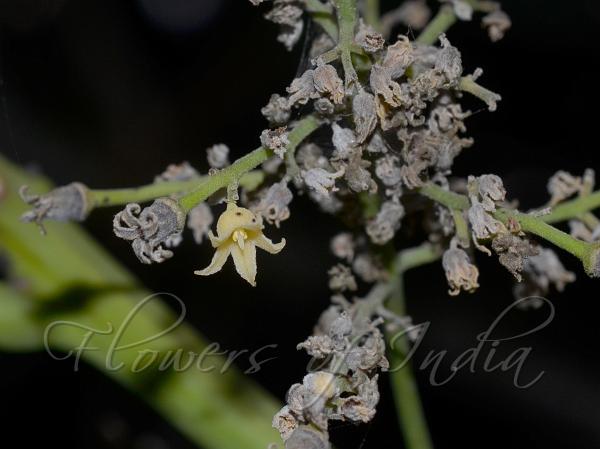|
| Para Rubber Tree |
|

|

| File size | 465902 |
| Original date | 5/4/15 6:40 PM |
| Resolution | 0 x 0 |
| Flash | Flash fired, return detected |
| Focal length | 60.0mm |
| Exposure time | 1/160s |
| Aperture | 11.0 |
| Focus Distance | |
| Metering Mode | Multi-segment |
| Camera make | NIKON CORPORATION |
| Camera model | NIKON D5100 |
| Sensor type | OneChipColorArea |
|
|
|
|
Photo: |
Botanical name: Hevea brasiliensis Family: Euphorbiaceae (Castor family)
Synonyms: Hevea sieberi, Hevea randiana
Synonyms: Hevea sieberi, Hevea randiana
Para Rubber Tree is a deciduous tree, typically
30-40 m tall, though usually 15-25 m tall in cultivation, with a leafy
crown. The trunk is cylindrical, but frequently swollen towards the
base, and the bark is pale to dark brown with a smooth surface and the
inner bark pale brown with abundant white or cream coloured latex. The
leaves are in spirals and with three leaflets. The flowers are small
with no petals, bright or cream-yellow in colour and extremely
pungent.They are either male or female but both are found in the same
inflorescence. The fruit is an exploding 3-lobed capsule. In the wild,
trees may grow to over 40 m and live for 100 years, but in plantations
they rarely exceed 25 m because growth is reduced by tapping for
rubber. Plantation trees are usually replanted after 25-35 years when
yields fall to an uneconomic level. The milky latex of Para Rubber Tree
is the raw material for natural rubber. Wild and semi-wild Para Rubber
Tree is found in the northern part of South America, from Brazil to
Venezuela, and Colombia to Peru and Bolivia. Rubber is now grown in
Malaysia, Indonesia, Thailand, Vietnam, Sri Lanka, China, India and
Papua New Guinea in Asia, as well as in Africa.
| Identification credit: Anurag Sharma | Photographed in Hebri, Karnataka. |
• Is this flower misidentified? If yes,